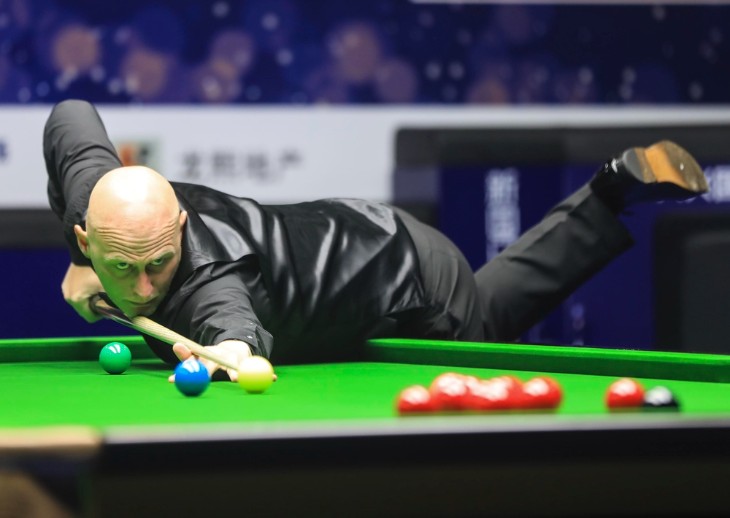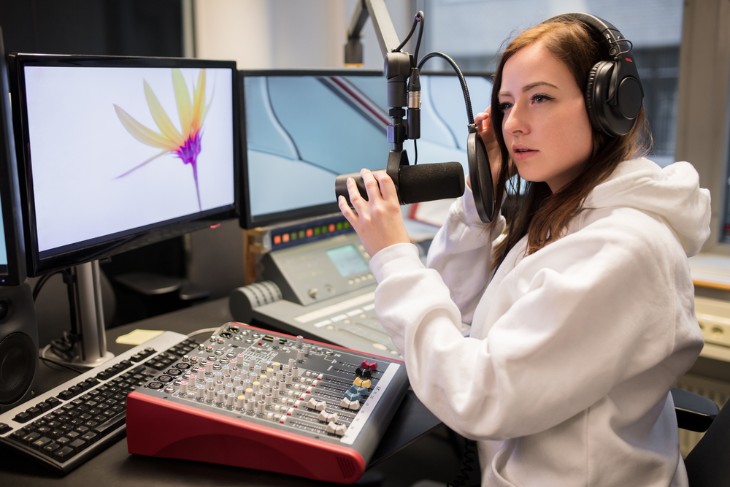- Introduction of Camera Systems
- The Crucial Role of Lighting
- Advancements in Cue Tracking Technology
- Real-time Data Analysis Tools
- The Impact of High-Definition Broadcasting
- Internet Streaming and On-demand Services
- Interactive Viewer Experience
- Challenges and Solutions in Live Commentary
- Technological Innovations in Player Analysis
- Conclusion
In its early days, snooker matches were predominantly witnessed by a live audience in snooker halls, and the concept of broadcasting the game to a wider audience was practically non-existent. It wasn't until the mid-20th century that the first steps were taken to bring snooker to the television screens.
The initial attempts to broadcast snooker matches faced several formidable technological challenges. The limitations of the cameras available at the time posed a significant hurdle. These cameras struggled to capture the intricate details of the snooker table, leading to less-than-optimal viewing experiences for the audience. Additionally, the lighting conditions in snooker halls were often inadequate for television broadcasts, resulting in poor image quality.
Moreover, the process of recording and broadcasting live matches in the absence of modern digital technology was laborious. Early broadcasts relied on analog equipment, which made editing and replaying crucial shots a complex and time-consuming task. These challenges not only affected the quality of the broadcasts but also constrained the potential growth of snooker as a televised sport. However, as technology continued to advance, solutions to these issues emerged, paving the way for a new era of snooker broadcasting.
Introduction of Camera Systems
The introduction of camera systems marked a pivotal moment in the evolution of snooker broadcasting. As technology improved, so did the capabilities of cameras used in capturing snooker matches. High-quality, purpose-built cameras designed for snooker began to replace their earlier counterparts. These cameras had the ability to zoom in on the table, allowing viewers to witness the precise movements of the cue ball and the intricacies of each shot. This development not only enhanced the viewing experience but also opened up new possibilities for presenting the sport.
One of the notable advancements in camera technology was the integration of slow-motion and multiple-angle shots. Slow-motion replays provided viewers with an in-depth analysis of critical shots, while multiple-angle shots allowed them to see the table from various perspectives. These innovations not only made the game more engaging but also enabled commentators and analysts to provide more insightful commentary and analysis. This shift towards improved camera systems laid the foundation for modern snooker broadcasting.
The Crucial Role of Lighting
Undoubtedly, lighting plays an indispensable role in snooker broadcasting. In the early days, the lighting conditions in snooker halls were far from ideal for television broadcasts. The inadequate illumination cast shadows and made it challenging for viewers to follow the game effectively. To address this issue, significant improvements were made in lighting technology specifically tailored for snooker tables.
Modern snooker halls are equipped with advanced lighting systems that provide consistent and uniform illumination across the entire table. These systems eliminate shadows and ensure that the balls, the cue ball's trajectory, and the players' actions are clearly visible on television screens. Furthermore, the integration of LED lighting not only improved visibility but also reduced energy consumption, making it a sustainable choice for snooker venues. The enhancement of lighting technology has significantly contributed to the overall quality of snooker broadcasts, enhancing the experience for viewers worldwide.

Advancements in Cue Tracking Technology
One of the significant advancements in modern snooker broadcasting has been the implementation of cue tracking technology. This innovation involves the use of sensors and cameras to precisely track the movement of the cue and provide real-time data on its speed, angle of impact, and spin. This data not only enriches the viewing experience by offering insights into the players' techniques but also enables commentators to provide a deeper analysis of each shot. Cue tracking technology has become an integral part of snooker broadcasts, enhancing the understanding and appreciation of the sport.
Moreover, cue tracking technology has also had a positive impact on player performance analysis. Coaches and players can review the data to identify areas for improvement, refine their techniques, and make more informed decisions during matches. This technology has not only benefited broadcasters and viewers but has also become a valuable tool for players and their teams, contributing to the overall development of snooker as a sport.
Real-time Data Analysis Tools
In the era of modern snooker broadcasting, real-time data analysis tools have become indispensable. These tools provide viewers with a wealth of statistical information during live matches, ranging from player performance metrics to historical data. The integration of these tools has enhanced the viewer's understanding of the game, allowing them to track player statistics such as pot success rates, average shot times, and safety success.
Real-time data analysis tools also contribute to the excitement of snooker broadcasts by offering predictive analytics. These predictions, based on historical data and current match conditions, can provide insights into a player's chances of winning a particular frame or match. This adds an additional layer of engagement for viewers, allowing them to anticipate the outcome of crucial moments in the game. Moreover, the availability of real-time data has enriched the commentary and analysis of snooker matches, providing a more comprehensive and informative viewing experience.
The Impact of High-Definition Broadcasting
The advent of high-definition (HD) broadcasting has revolutionized the way snooker is presented to viewers. HD technology offers unparalleled clarity and detail, which is especially crucial in a sport like snooker, where precision is paramount. With HD broadcasts, viewers can now see every nuance of the game, from the intricate patterns on the balls to the expressions on the players' faces. This level of visual clarity has brought snooker matches to life, making it easier for fans to immerse themselves in the sport.
Furthermore, the adoption of HD broadcasting has also improved the analysis of snooker matches. Analysts and commentators can dissect each shot and strategy with greater precision, thanks to the enhanced image quality. The availability of slow-motion replays in HD has become a staple in snooker broadcasts, allowing fans to appreciate the artistry of the game like never before. In essence, HD technology has elevated snooker broadcasting to new heights, enhancing the experience for both casual viewers and die-hard enthusiasts.
Internet Streaming and On-demand Services
The digital age has ushered in a new era of snooker broadcasting through internet streaming and on-demand services. With the rise of platforms like YouTube, Facebook, and dedicated streaming services, fans can now watch snooker matches from anywhere in the world with an internet connection. This accessibility has democratized the sport, enabling a global audience to follow their favorite players and tournaments at their convenience.
Moreover, on-demand services have allowed fans to relive iconic moments in snooker history. Classic matches, legendary shots, and memorable interviews are readily available for enthusiasts to revisit. This not only preserves the heritage of snooker but also introduces new generations to the sport's rich history. Internet streaming and on-demand services have bridged the gap between fans and the game, providing an interactive and immersive experience that was once unimaginable. As technology continues to evolve, the future of snooker broadcasting is likely to be even more accessible and engaging for fans worldwide.
Interactive Viewer Experience
The advent of technology has brought about an interactive viewer experience in snooker broadcasting. Today, viewers have the ability to engage with the game in ways that were once inconceivable. Interactive features such as live statistics, player profiles, and even in-match polls provide viewers with a deeper understanding of the sport and an opportunity to become actively involved in the viewing process. These features not only enhance the overall experience but also foster a stronger connection between the audience and the game.
One notable development is the introduction of second-screen experiences. Through dedicated apps and online platforms, viewers can access additional content, real-time updates, and exclusive behind-the-scenes footage while watching a match. This dual-screen approach allows fans to dive deeper into the world of snooker, making them feel more connected to the sport and its players. The interactive viewer experience has redefined how we engage with snooker broadcasting, making it a more immersive and participatory endeavor.
Challenges and Solutions in Live Commentary
Live commentary is an integral part of snooker broadcasting, providing viewers with insights, analysis, and context throughout a match. However, it comes with its own set of challenges. Commentators must maintain a delicate balance between providing informative commentary and not overwhelming the viewer with unnecessary details. Striking this balance is essential to ensure that viewers of all levels of expertise can enjoy the broadcast. Moreover, the pace of snooker can vary greatly, from quickfire exchanges to prolonged tactical battles, requiring commentators to adapt their approach accordingly.
One challenge in live commentary is providing accurate insights into player strategies and intentions, especially when players employ intricate safety play or engage in mind games. Commentators must rely on their expertise and knowledge of the sport to decipher and convey these subtleties to the audience. Additionally, maintaining a neutral and respectful tone towards all players is paramount to ensure a fair and unbiased viewing experience.
To address these challenges, some broadcasters have introduced expert panels featuring former professional snooker players and coaches. These experts provide valuable insights and a deeper level of analysis, enhancing the overall commentary.

Technological Innovations in Player Analysis
Technological innovations have not only transformed the way snooker is broadcasted but also revolutionized player analysis. Coaches and players now have access to advanced tools and software that allow for in-depth scrutiny of performance. Video analysis software, for instance, enables players to review their matches shot by shot. This level of granularity helps players identify strengths, weaknesses, and areas for improvement, contributing to the continuous refinement of their skills.
Moreover, player analysis tools provide statistical insights that extend beyond individual matches. Players can track their performance over time, identify trends, and make data-driven decisions to optimize their gameplay. This data-driven approach has not only elevated the standard of play in snooker but has also added a layer of excitement for fans who can follow the progress and development of their favorite players.
Additionally, technology has facilitated remote coaching and collaboration. Players and coaches can analyze matches together, even when geographically distant, through video conferencing and shared analysis platforms. This has opened up new avenues for talent development and allowed players to access expertise from around the world. As technology continues to advance, we can expect further innovations in player analysis, ultimately leading to higher levels of performance in the world of snooker.
Looking ahead, the future prospects of snooker broadcasting are promising. The integration of technology is likely to continue evolving, offering even more immersive and engaging experiences for viewers. Virtual reality (VR) and augmented reality (AR) technologies hold the potential to transport viewers into the heart of the snooker arena, allowing them to experience matches as if they were present in the venue.
Furthermore, the global reach of snooker is expected to expand, thanks to the accessibility offered by online streaming and on-demand services. This could lead to a broader and more diverse fan base, fostering greater interest in the sport worldwide.
Conclusion
In conclusion, technology has played a transformative role in snooker broadcasting, enriching the viewing experience, providing new tools for player analysis, and opening up new possibilities for the future. As technology continues to advance, the world of snooker broadcasting is poised for continued growth and innovation, ensuring that fans of this captivating sport will have even more to look forward to in the years to come.
For more information:




.webp)


 (1).webp)




















